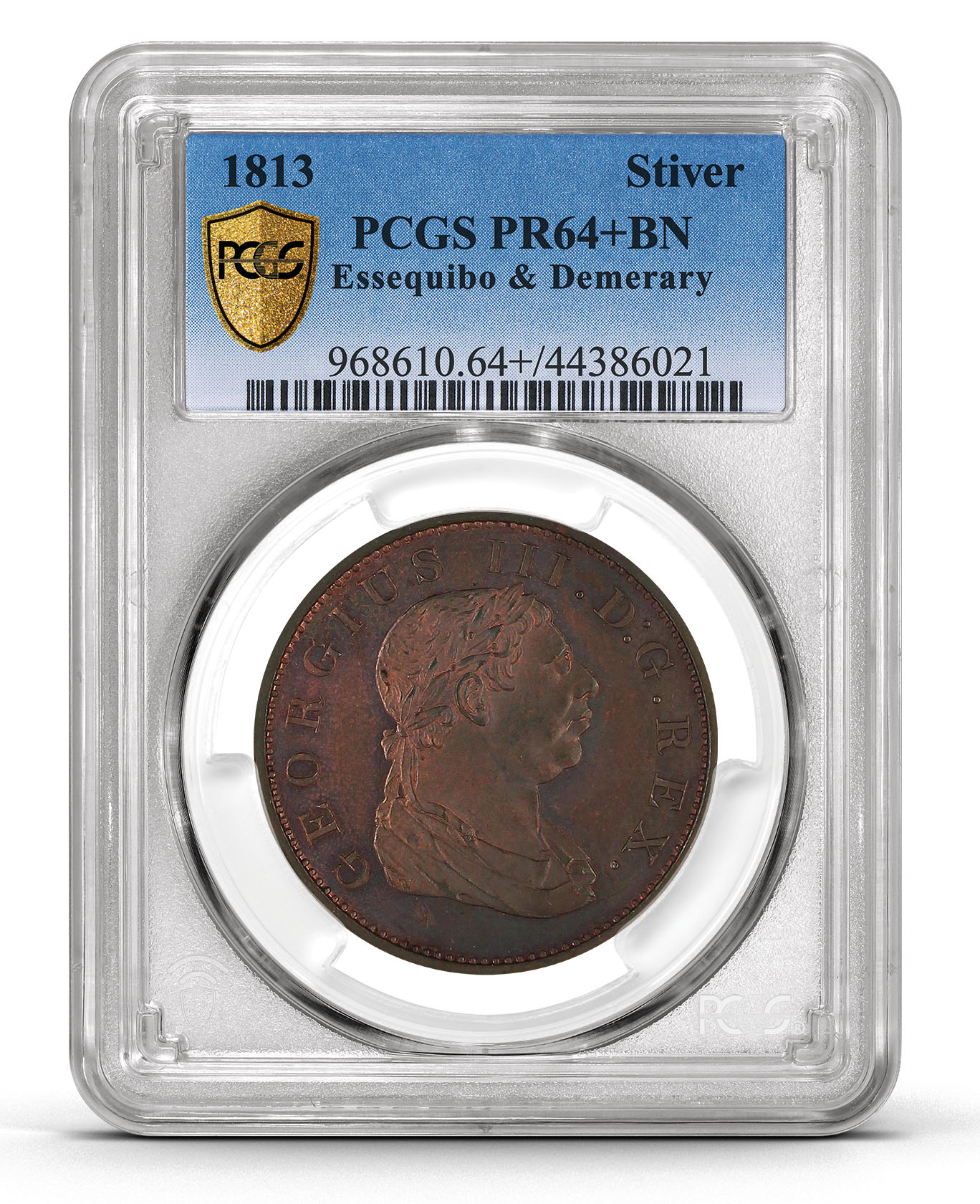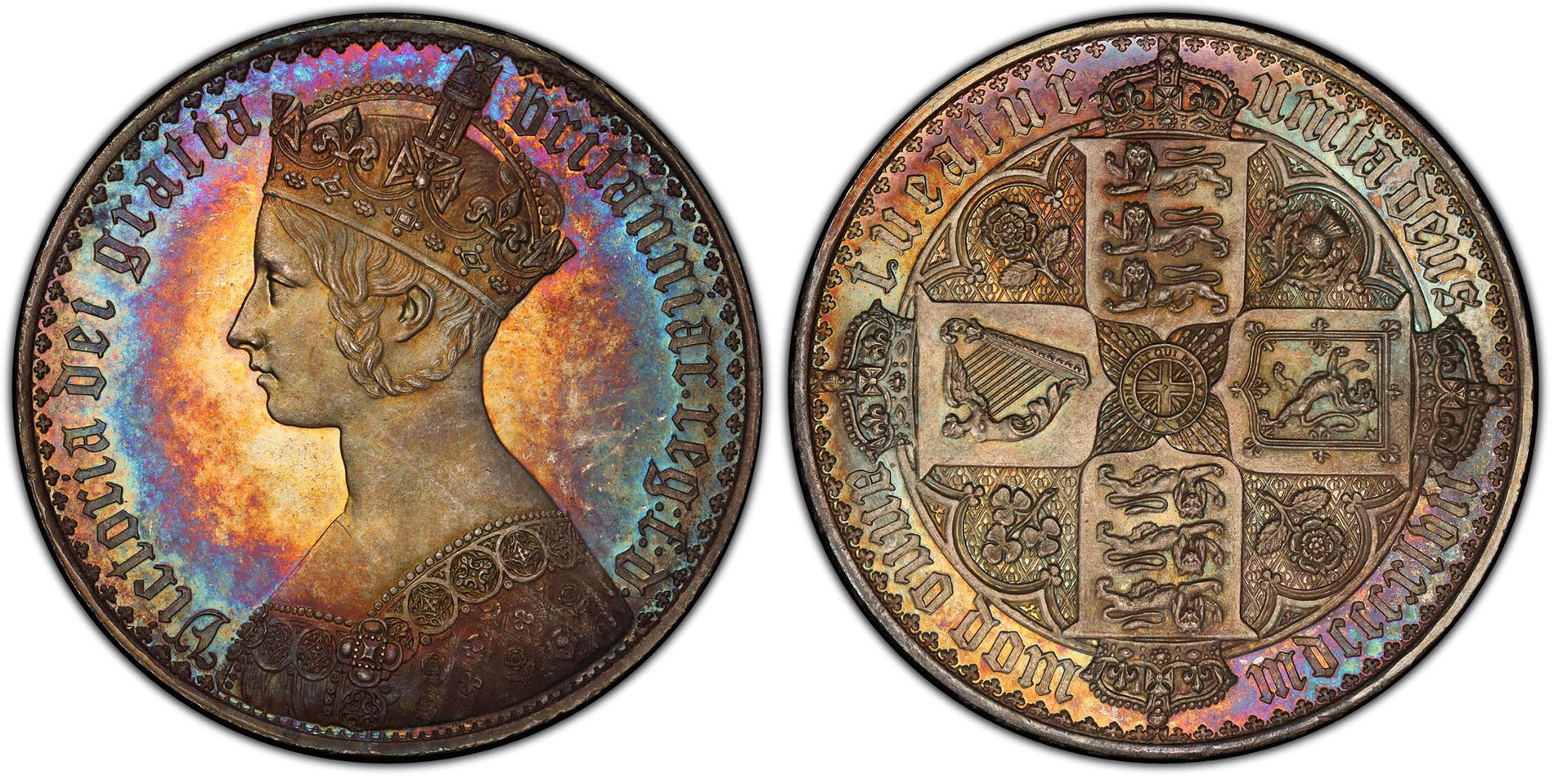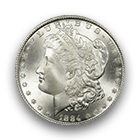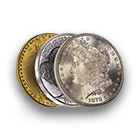It is always surprising to see coins from all around the world being submitted from places that one would not think they would turn up. Recently, in a PCGS Express submission for our office in Hong Kong, a coin from a short-lived British colony was submitted for grading. It is likely that if one were doing person-on-the-street interviews, no respondents would reveal any knowledge of Essequibo, Demerara, or even British Guiana.
Once an area colonized by the Dutch, the colonies of Demerara and Essequibo were both located in what is today the South American country of Guyana. Essequibo, named for the Essequibo River, was the first area colonized by the people who fled Pomeroon after being destroyed by Spanish and indigenous attackers. The area was a colony of the Dutch West India Company from 1616 until 1792, with the Dutch state continuing to hold it until 1815.
Demerara is also named for its river. The Demerara River first started as a trading post in the 1690s and in 1745 became a separate colony. It, too, was ruled by the Dutch West India Company until 1792 and then the Dutch State until 1815. Starting in the 1780s, the colonies started changing possession between Dutch, French, and British.
With different treaties, these colonies would change hands more than six times between 1781 and 1815. It eventually became a British Colony and was ratified as such by the Netherlands in 1815. The colonies of both Essequibo and Demerara were combined into a single colony by the British in 1812.
What was different about Demerara, Essequibo, and Berbice is that a deal was struck with the colonies that all laws and customs could remain and all citizens would be equal to British subjects. This continued with their currency, which remained on the Dutch standard of guilder and stiver denominations even being produced by the British. Aside from the cut-countermarked pieces of 1808, the first British coins started being introduced dated 1809 with one-quarter, one-half, one guilder, two guilder, and three guilder denominations.
Even before the colonies were combined, the coins noted "COLONIES OF ESSEQUIBO & DEMERARY TOKEN" on the reverse. The first copper coins were produced in 1813 in the denominations of one half and one stiver. Coins for Essequibo and Demerara would be made until 1835 when the colonies were merged with Berbice and renamed British Guiana.
An Essequibo and Demerara coin submitted to PCGS from Hong Kong was that of an 1813 copper stiver struck in proof. Struck by the Royal Mint for collectors alongside its business strike for commerce, the proof has an unknown mintage. This coin is nice and original, grading PR64+BN by PCGS.







 Copper & Nickel
Copper & Nickel
 Silver Coins
Silver Coins
 Gold Coins
Gold Coins
 Commemoratives
Commemoratives
 Others
Others
 Bullion
Bullion
 World
World
 Coin Market
Coin Market
 Auctions
Auctions
 Coin Collecting
Coin Collecting
 PCGS News
PCGS News